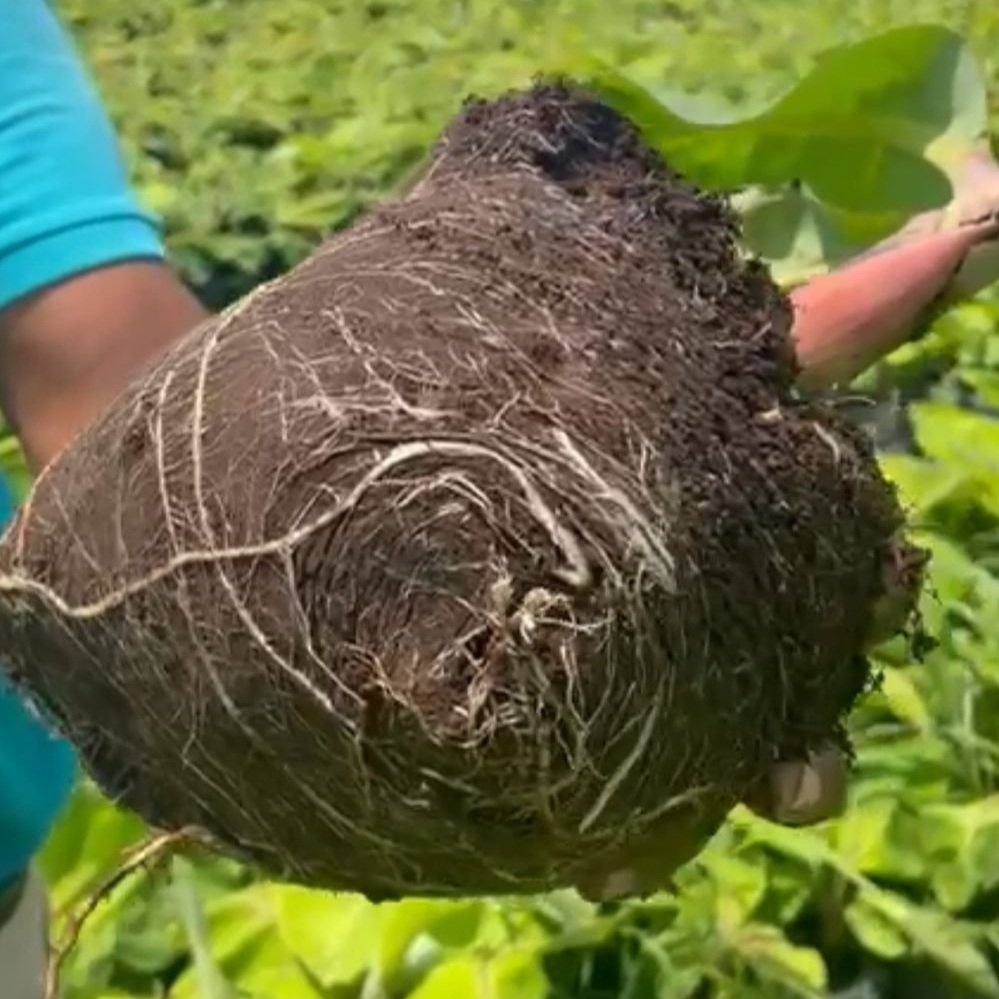“Regenerative nursery at 4 weeks, transplanted 2 weeks earlier than expected”
The journey of Rosario Hanon reveals the transformative potential of regenerative agriculture in overcoming the myriad challenges faced by conventional farming, particularly on her plantain farm in Nicaragua.
The Struggles of Traditional Farming: A Family's Tale
I come from a family of farmers. My grandfather grew rice, and my father and grandfather later grew cantaloupes for export. Farming was never easy. My grandfather lost his rice harvest multiple times due to excess rain, and my dad never made a penny with the cantaloupes.
Fast forward 20 years, I encountered farming firsthand. I embarked on an endeavor with my dad and brothers to grow plantains for export. The financial projections looked promising, even in poor scenarios. We had contingency plans for excess rain: my dad built a state-of-the-art drainage well, installed irrigation systems, and stocked up on the right fungicides, weed killers, and fertilizers. But looking back, we were merely treating symptoms, not realizing that under the right circumstances, nature is wise and can heal itself.
The Invisible Costs of Conventional Agricultural Practices
Conventional agricultural practices often come with hidden costs. While we aimed to ensure high yields and quality produce, we overlooked the long-term damage caused by excessive use of chemicals and intensive farming techniques.
The reliance on fungicides, insecticides, and chemical fertilizers seemed necessary to protect our crops, but it led to soil degradation and reduced biodiversity. We failed to see that these methods were not sustainable and that they compromised the health of our land and the quality of our produce.
Exporting Plantains: The Hidden Carbon Footprint
Exporting fresh fruit comes with its own set of challenges and environmental impacts. To ensure the fruit doesn't ripen in transit, we had to harvest early and use bunch bagging to protect the peel for the end consumer. This process increased our carbon footprint significantly.
Moreover, at least 40-50% of the plantain is the peel, meaning that a substantial portion of the resources we invested—fertilizers, insecticides, fungicides—was essentially wasted. Transporting fresh fruit means exporting 'gold' but also 'trash,' as the peel, which contains essential nutrients, could have been returned to the land to enrich the soil.
Nature's Insight: The Role of Regenerative Agriculture in Repairing Harm
Regenerative agriculture provides a method to mend the harm inflicted by traditional farming techniques. By concentrating on enhancing soil health, we can foster an environment where nature can restore itself. Healthy soil naturally manages water drainage, minimizing the risk of waterlogging, which was a major challenge for us in the past.
Sulfur, a natural fungicide, is also vital. For example, when the Concepcion volcano erupted, the sulfur released into the air shielded our plantain fields from sigatoka that year. This natural event underscored the potential of regenerative methods to boost crop resilience.
We stumbled upon regenerative agriculture when we lacked the funds to purchase fertilizers, and our roots were severely compromised by nematodes. It was a difficult period, and we were on the verge of losing our crops. My brother, ever the innovator, began experimenting with worms and their "pee." This surprising solution naturally provided humic and fulvic acids, which enhanced the land's biodiversity and promoted root growth to levels we had never witnessed before, even with the "best" agrochemicals we used. The change was extraordinary. It immediately enhanced the roots' ability to absorb minerals from the soil and significantly reduced the nematode population. As the weeks went by, we watched in amazement as our fields flourished, lush and vibrant, a testament to the effectiveness of nature's own solutions. This experience not only rescued our farm but also enlightened us to the potential of sustainable farming practices, motivating us to share our newfound insights with neighboring farmers who were encountering similar challenges.
Reaping the Benefits: Profitable and Sustainable Outcomes
Adopting regenerative agriculture leads to better outcomes, both environmentally and financially. By processing plantain peels and returning them to the fields, we reduce our reliance on chemical fertilizers and lower our costs.
Healthy soil not only drains water more efficiently but also supports robust plant growth, leading to higher yields and better-quality produce. Regenerative farming practices have proven to be profitable and sustainable, ensuring the long-term viability of our plantain farm while preserving the health of our land for future generations.
I departed from the farming business, realizing it wasn't my calling. However, had we embraced regenerative practices from the start, I might have reached a different conclusion.

